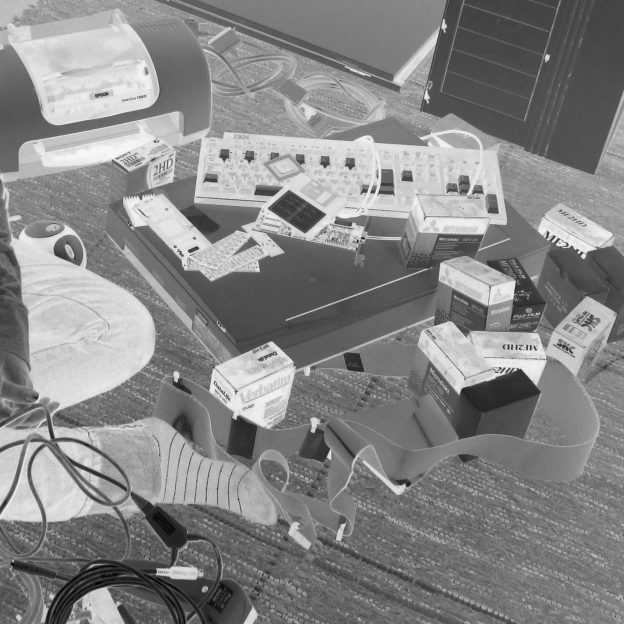Technology is everywhere, existing even in remote locations—especially outdated, abandoned devices. Broken and forlorn in ditches, they can be observed while hiking or picking berries or mushrooms, computer cases and storage devices are trashed amidst heavy home appliances.
In Introduction: The Materiality of Media and Waste, Jussi Parikka writes “…media are of nature, and return to nature”. This describes the intertwining of the processes and dependecies of materials and meanings. But media, once digested, processed and abandoned by humans, does not return to the nature to be a part of the nitrogen cycle. The contents of a broken DVD do not nourish the shrubs and moss that surround it.
Depending on the materials, it will take anywhere between hundreds to thousands or even millions of years for objects to decompose in the nature. Recycling solutions that would break up the materials of an object and reassemble them into new objects are unrealistic in a cultural system that is peculiar about the material qualities of said objects. Even if such a recycling solution existed, there would still be a part of the materials that could not be re-used. Additionally, the machinery used to break up and rearrange the materials requires energy—and thus resources. Despite this, we are accustomed to welcome new objects into a world already filled with objects, and continue conjuring relatively useless objects into the world in the hopes of finding new meanings or marginal profits.
The information on a packaging of any food item informs the consumer the food’s country of origin. The information printed in the casing of a smartphone only tells us where it was assembled: there’s no telling where the oil or minerals or the energy used on the assembly line originated from, and we really don’t care as it seemingly doesn’t affect the qualities of said device. But the material plane and the media infrastructures aren’t separate—what were the effects of tsunamis in Thailand for the international hard drive availability and sales (and the decisions to invest or not to invest on new storage space)? What are the effects of discarding a bunch of new graphics cards (that have been used for mining cryptocurrencies requiring heavy processing power)?
Currently in Amos Rex, works by Amsterdam-based collective Studio Drift are being exhibited: the ongoing project Materialism presents dissections of various everyday objects—such as a plastic bottle, a car or a mobile phone—as cubic compositions or assortments. On their website, Studio Drift describes their project: “…civilization has introduced millions of new ‘artificial species’ through the ecosystems of commerce, objects that support our pleasant, contemporary existence and contain myriad materials forged together by design. Yet, we feel disconnected from this materiality today, blind to the inner workings and composition of all these artificial things, much as we might have looked at the night sky and felt ignorant about the moon and stars in the days before the Renaissance.”
Sources/further reading
http://www.livingbooksaboutlife.org/books/Electronic_waste/Introduction
https://ourworldindata.org/faq-on-plastics
https://www.nytimes.com/2011/11/07/business/global/07iht-floods07.html
https://amosrex.fi/en/studio-drift-elemental/
http://www.studiodrift.com/work#/materialism/
(Photo: Auri Mäkelä, ca. 2008)


